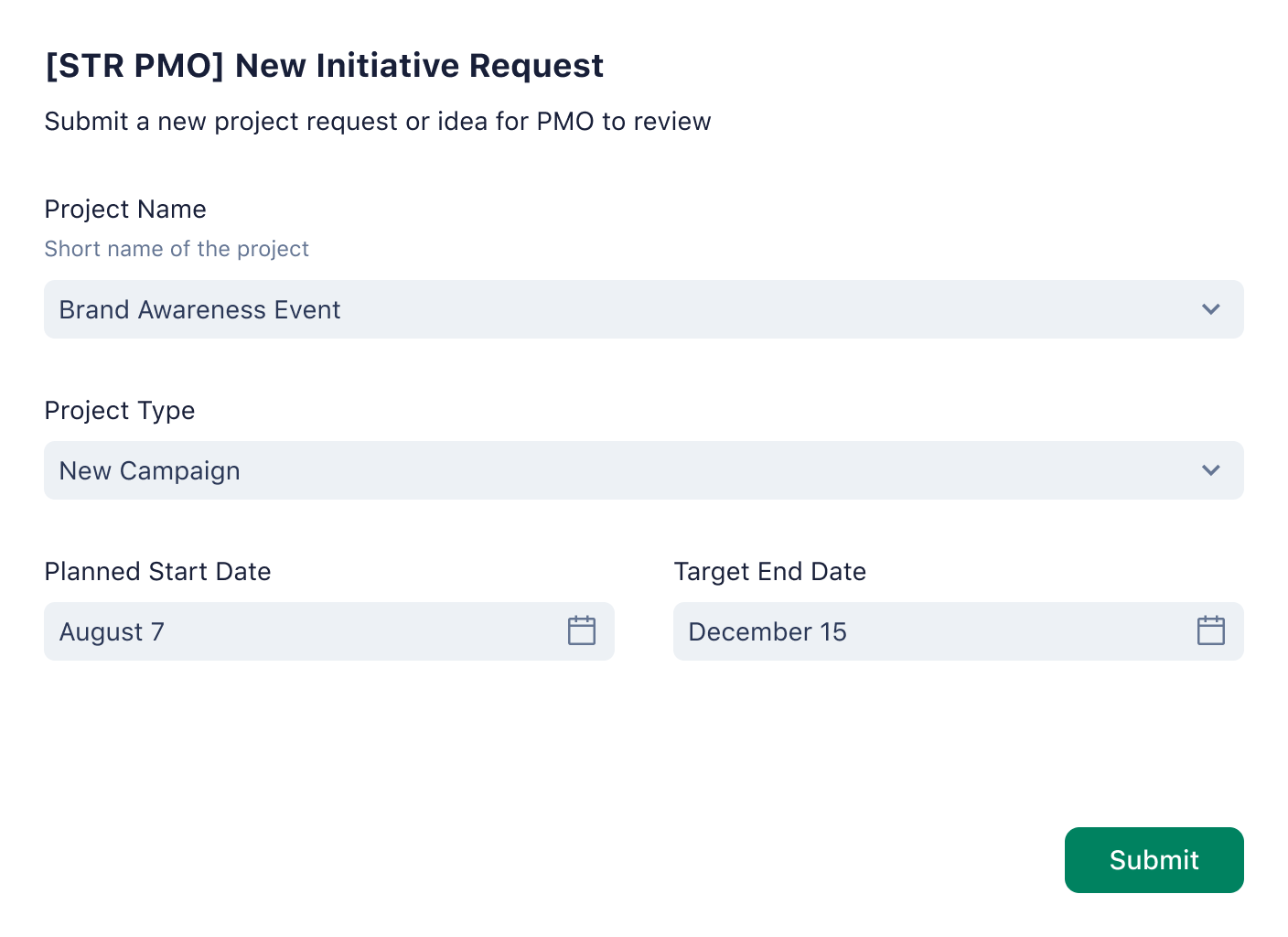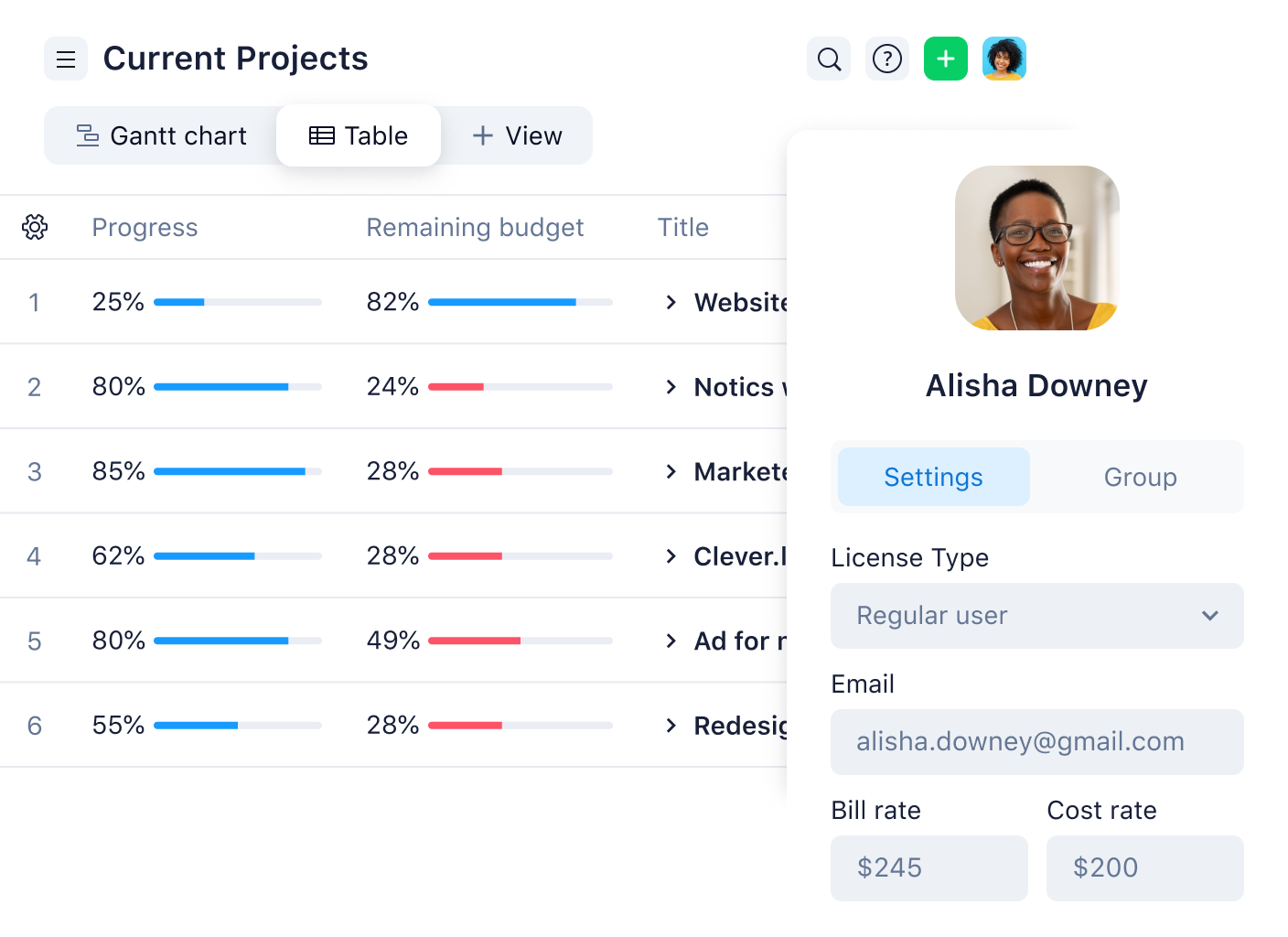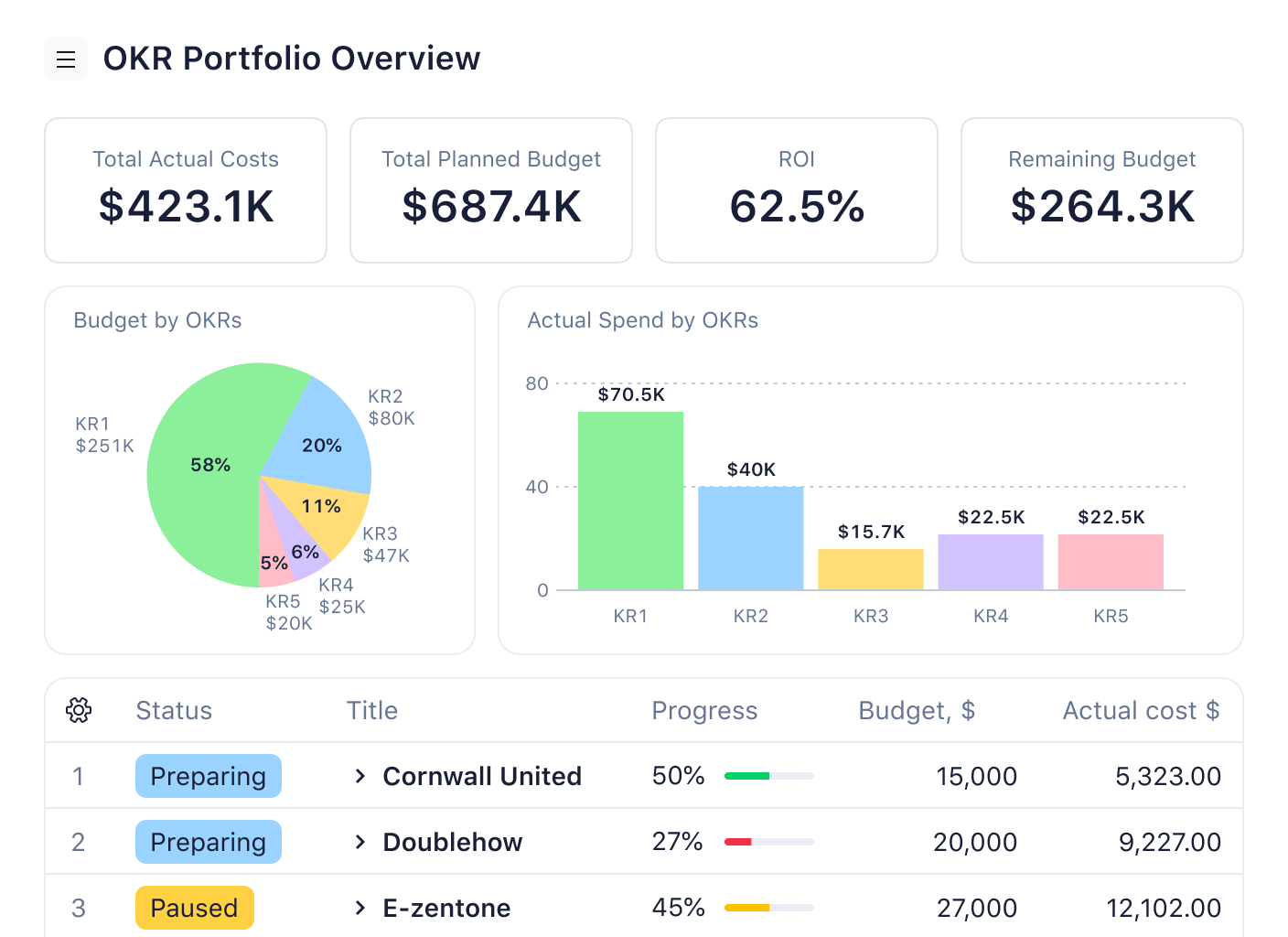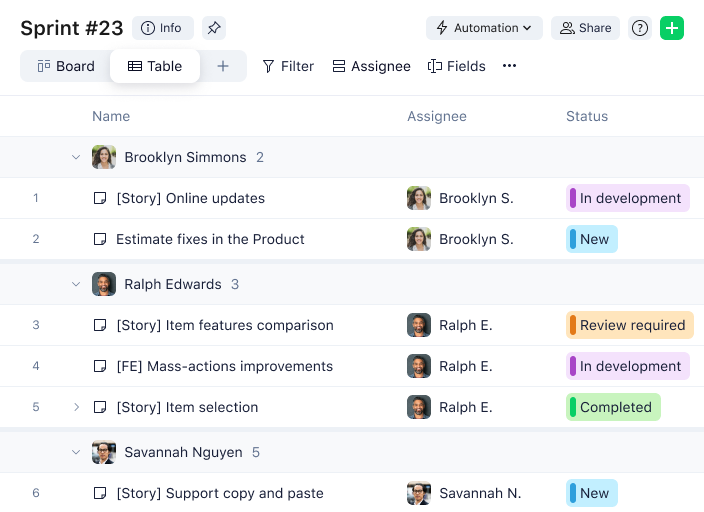What is a PMO? The Ultimate Guide to the Project Management Office (Infographic)
What is PMO?
PMO stands for project management office. In enterprise-sized organizations, it is the department that improves project management by standardizing processes and improving efficiency.
As you may know, project management is a discipline loaded with acronyms, including PMP, PRINCE2, CPM, WBS, PMBOK, and PMI. And PMO is no exception.
Project management offices have become increasingly popular over the last decade, with 82% of organizations having one or more PMOs, according to the State of Project Management Report 2025: Wellingtone PPM.
But what is the role of a PMO? What purpose does it serve in project management and business? In this article, I will show you the concept of a project management office (PMO), providing a deeper understanding of how a PMO can streamline project management processes, align projects with business objectives, and ultimately drive organizational success.
To maximize the potential of your PMO, I suggest you consider implementing Wrike’s comprehensive project management office solution, which offers a powerful set of tools designed to elevate your PMO’s performance and improve collaboration across project teams.
Need a quick summary? Check out our visual guide to PMOs below.


What does PMO mean?
As mentioned, a PMO (project management office) is an internal or external group that defines and maintains project management standards across an organization. PMOs are responsible for maintaining best practices and documenting project status and strategy in one place.
The project management office is the keeper of documentation, guidance, and metrics for project execution, ensuring projects are completed on time and within budget.
Types of PMOs
I’ve seen businesses create a successful PMO only to realize later that it doesn’t fit their needs.
Some companies need strict oversight, while others just want basic guidance. So, what PMO types work best? It all depends on how much control and structure your projects need.
I will break down the PMO types and how they operate.
Supportive PMO
This type of PMO doesn’t interfere with projects but provides teams with valuable resources. This works best for organizations that manage multiple projects and want some consistency without strict enforcement. A supportive PMO helps teams by offering:
- Templates and frameworks for project planning
- Training sessions to improve project execution
- A knowledge base of best practices and lessons learned
- Tools for tracking progress and reporting
- Access to mentors and experienced project managers
- Collaboration spaces to share insights across project teams
One of the biggest advantages of a supportive PMO is that it fosters cross-team collaboration without imposing unnecessary rules. However, for this to work, teams need an efficient way to share information and track project updates in real time. You can use Wrike’s shared workspaces to collaborate and exchange ideas with your teams without jumping from one email thread to another.
Controlling PMO
A controlling PMO sits in the middle of the spectrum. It enforces project processes, ensuring teams follow guidelines while still giving them room to work. I’ve seen this work best in organizations where projects must meet industry standards, like in finance or healthcare.
A controlling PMO typically:
- Establishes a clear project lifecycle
- Sets policies for risk and compliance management
- Aligns projects with business goals
- Works closely with senior management to review project progress
- Standardizes reporting tools and dashboards


Directive PMO
If a company needs hands-on project management, a directive PMO is the way to go. I’ve observed this structure in large enterprises where top management wants complete control over execution. A directive PMO oversees portfolio management for broader company-wide initiatives.
External PMO
Not all PMOs are built in-house. In some cases, businesses turn to an external PMO to provide project oversight without maintaining an internal PMO structure. I’ve seen this work well for organizations that need temporary project governance or those that lack the internal resources to manage a full-scale PMO.
An external PMO can be beneficial when:
- A company is undergoing large-scale transformations, such as mergers, acquisitions
- There’s a need for independent oversight to ensure compliance
- Organizations want to scale project management capabilities quickly without hiring and training an internal team
PMO roles and responsibilities
A small company may be able to scrape by without having a project management office. But if your organization has numerous cross-functional projects operating simultaneously, having a PMO should certainly be on your priorities list.
Depending on the size and scope of projects, a successful project management office would be an ideal mix of people, tools, and processes.
Here are some PMO roles and responsibilities you should know:
- Select the right projects: A PMO is often in charge of choosing the right blend of projects for the organization. These projects should align with wider organizational goals. This involves creating policies, processes, and workflows to define and manage all projects.
- Champion project management: It’s the role of a PMO to keep employees updated with regular communication and training. This includes maintaining a shared project culture, uniform work techniques, and defining project metrics and KPIs.
- Perform effective resource management: A PMO should define roles and responsibilities and manage priorities based on budgets and timelines. They will also train and coach employees to ensure project management happens in a streamlined and uniform manner across the organization.
- Mobilize project tools: PMOs curate work management tools, templates, and software to create a reliable repository of project data that results in better decision making.
What types of organizations use a PMO?
Many organizations rely on PMOs to standardize processes, allocate resources, and track performance. Here are seven that benefit the most:
- Large enterprises: Manage cross-departmental projects and strategic initiatives.
- Government agencies: Ensure compliance and oversee large-scale programs.
- Healthcare and pharma: Handle clinical trials, research, and regulatory approvals.
- Tech and software: Support product development and IT transformations.
- Finance and banking: Oversee regulatory projects and digital initiatives.
- Construction and engineering: Manage timelines, budgets, and risk in large projects.
- Consulting and professional services: Track billable work and ensure quality project delivery.
What is the difference between a PMO and a project manager?
I’ve seen many businesses confuse a project management office (PMO) with project managers, but they serve completely different purposes.
Even though they are functionally related, a project manager and a PMO are different. While a project manager is an individual taking care of a particular project from start to finish, a PMO is a team of specialists who work at an organizational level.
A project manager’s duties include defining goals, data gathering, task scheduling, and managing the project’s costs, budgets, and resources.
The PMO is bigger in scope and implementation. It is a multidisciplinary team of IT, planning, finance, risk management, and resourcing specialists who collaborate to ensure that all organizational projects are delivered with high quality and achieve their defined outcomes. This is accomplished by mapping out project goals and defining processes, workflows, methodologies, resource constraints, and project scope.
Need a quick summary? Here’s the difference between PM and PMO.
Project manager | Project management office (PMO) |
Manages individual projects from start to finish | Oversees project governance, strategy, and alignment across the organization |
Defines project goals, manages timelines, allocates resources, and mitigates risks | Develops governance structures and establishes project planning frameworks |
Tactical, focused on short-term project success | Strategic, ensuring projects align with long-term company objectives |
Works closely with project teams, clients, and sponsors | Engages with top management to maintain oversight |
Who needs a project management office?
Not every company has a PMO, nor does every company need one. However, project management offices are beneficial if the number of projects is growing in an organization. The risk of failure increases when resources get stretched and competing priorities arise.
A PMO plays the role of a conductor, understanding how each proposed project fits into the wider business strategy. It helps to ensure resources are appropriately allocated to minimize project failure.
You may need a project management office if:
- Projects repeatedly finish later than planned or over budget
- Projects are not correctly aligned with business goals
- Multiple projects are running simultaneously, but teams aren’t aligned
- Your stakeholders do not have visibility into project progress
- Team members are stretched too thin due to poor resource allocation
- You do not have a standardized process for initiating and executing projects
- You are not able to track project success accurately
Speaking of tracking projects, if you need to monitor task progress, I suggest you use Wrike. With Wrike, you can get real-time insights into every project and identify potential roadblocks instantly.


How popular are PMOs?
Project management offices are becoming increasingly popular for organizations of all sizes. In 2000, just 47% of organizations had a PMO. In 2020, 89% reported having a PMO (with 50% having more than one).
For companies with revenue over $1B, that number climbs to 95%. Only 9.9% of firms stated that they do not have a project management office at all.
But why are so many organizations investing in PMOs? Sony Pictures Television, for example, knew it needed a better way to manage creative projects across global teams. Initially, its processes were fragmented, heavily reliant on email, and lacked visibility.
But after implementing Wrike, it saw a 40% increase in project delivery. Cheryl Venable, Senior Manager of Operations for the Creative Center at Sony Pictures Television, shared: “So much of Wrike’s flexible structure allows us to apply our own flavor to it. Many other enterprise-level tools only succeed for six months and then blow up, but we get so much more out of Wrike.”

“I’ve never seen a tool as easy to use, as easy to onboard new users, as easy to scale, and as easy to customize to your own workflow, process, team, clientele, and changing environment.”

Who staffs the PMO?
PMO staff are highly experienced professionals, averaging at least 10 years in the workforce. Besides, 45% have a PMP (Project Management Professional) certification. The average project management office has nine staff members.
PMOs operate according to the organization’s needs and goals, so each project management office is structured differently. Nearly half (49%) of PMOs report directly to C-level executives, while the vast majority of PMOs report to a vice president or higher.
The PMO director and PMO manager
Some 85% of PMOs have a PMO director or PMO manager to oversee projects across the entire organization. Here, the PMO director or manager maintains project management methodologies and standards, establishes the organization’s approach to the full lifecycle of projects, and manages resource distribution and allocation on all projects.
Project and program managers
Project and program managers are increasingly reporting to the project management office. The percentage of project managers who report to the PMO increased from 42% in 2012 to 52% in 2016. Also, 29% of organizations say 100% of their project managers report to the PMO.
Support roles
PMOs often include supporting roles to assist project and program managers with gathering accurate data. These roles include:
- Project schedulers
- Project planners
- Project controllers
- Administrative staff
PMO trainers and coaches
Training plays a large role in the project management office. More than half (60%) of PMOs have a project management training program in place (up from 49% in 2014). On average, PMOs provide five days of training for their staff. High-performing PMOs train the project management team in the following areas:
- 79%: Project management software tool training
- 76%: Project management basics
- 67%: Advanced PM skills development
- 61%: Leadership training
- 48%: Business alignment training
- 48%: PMP preparation
- 42%: PM certificate
- 33%: Agile project management
Benefits of a good PMO
According to Gartner, 40% of PMOs primarily focus on project delivery, ensuring that initiatives are planned, managed, and executed in line with business objectives. PMOs are often perceived as an unnecessary cost, but they provide value when deployed correctly. Project management offices create value by:
- Delivering projects under budget
- Increasing customer satisfaction
- Improving productivity
- Improving the alignment of projects with the company’s objective
- Decreasing the number of failed projects
I’ve worked with teams that were drowning in disorganized workflows, relying on endless email chains, scattered spreadsheets, and last-minute fire drills to get things done. But when they invested in PMO software, everything changed.
Siemens Smart Infrastructure, for example, needed a standardized system to manage execution across 20+ countries and 14,000 users. It had too many disconnected tools, security concerns, and inefficiencies slowing them down.
“We wanted to reduce labor time so we could be more competitive, and at the same time offer a collaboration tool on a global scale,” says Hannes Leitner, Process Owner, Project Execution at Siemens Smart Infrastructure.
Their teams operate across different regions, and each country has unique project requirements. A one-size-fits-all approach simply wouldn’t work.
“In Wrike, we create project templates and end-to-end workflows to fit the reality in the countries ... we created a flexible project template, where the project reflects the size and complexity of the customer project. And we also customized Wrike according to four different building disciplines.”
This is exactly why a modern PMO needs a centralized system that brings all teams together. Without it, teams spend more time searching for updates than executing their projects.


How to set up a PMO in 2025
Setting up a project office is one of those things that sounds simple in theory but can easily become overwhelming without the right approach.
I’ve seen companies rush into it. They set up policies, assign roles, and roll out PMO tools only to discover that it does not solve their real problems.
Before setting up a PMO office, ask yourself:
- Do we need more control over projects?
- Are we struggling with decision making at the leadership level?
- Do we have the right administrative support to manage a PMO effectively?
- How do our teams handle collaboration and reporting?
- Is there a need for structured oversight from a government agency or regulatory body?
- How can we ensure our business value remains a priority?
Here’s what I’ve learned from experience about setting up a PMO that doesn’t just exist on paper but truly makes a difference.
Start with clarity
Before setting anything up, take a step back. Why are you creating a PMO office in the first place? Some businesses implement one just because they think they “should,” but without a clear reason, it ends up being an extra layer of bureaucracy rather than a real solution.
I will advise you to hire a PMO manager who can step in to create structure, especially if you have active projects running. A consultative role from senior executives can also help set the tone for your project and drive efficiency.
Choose the right PMO model
The next course of action involves determining what kind of PMO to set up. Some companies fail simply because they chose the wrong PMO model. If your teams are resistant to change, a controlling PMO might be better than a directive PMO. If you’re struggling with compliance or regulatory oversight, a stricter model might be the right fit.
Standardize your processes
One mistake I see all the time? PMOs that introduce too much complexity. If your project management processes slow teams down instead of helping them work smarter, people will start finding ways to bypass them.
A good PMO creates project lifecycle guidelines that are clear and adaptable, rather than rigid. That means:
- Defining how projects move from initiation to completion without unnecessary steps
- Setting up a framework for risk management so teams can handle issues proactively
- Ensuring teams have the right PMO software to track progress without wasting time on excessive manual reporting
For organizations involved in mergers and acquisitions (M&A), having a PMO structure in place from day one is very important. The good news is that you can use Wrike’s PMO template to standardize the process. This makes it easy to manage multistage pipelines, track project status across teams, and securely centralize all data.


If processes are too strict, teams will see the PMO as a roadblock rather than a support system. Using structured templates to streamline operations can be a game changer for PMOs.
Leverage AI tools
One of the biggest changes I’ve noticed in project management practices over the past few years is the rise of AI-powered tools. I’ve seen teams save hours of manual work just by integrating AI-driven PMO software into their workflow. If you’re setting up a PMO office in 2025, ignoring AI means missing out on a major efficiency boost.
AI tools can help you:
- Predict risks
- Identify bottlenecks
- Reduce mundane tasks
- Identify historical patterns and frequent project issues
- Summarize long meeting notes, saving time and accelerating the path to execution


I’ve seen firsthand how manual project tracking, scattered data sources, and disjointed collaboration slow teams down. AI-powered solutions bridge these gaps by automating repetitive tasks, predicting risks, and providing real-time insights to help teams make data-driven decisions.
Our own VP of Product put it perfectly:

“AI will help companies analyze and connect many data sources, creating more transparency and providing critical insights that ultimately help teams make better decisions.”
How long does it take to get a PMO?
One of the first questions I hear from companies considering a PMO office is: How long will this take? The truth is, there’s no one-size-fits-all answer.
Some businesses launch a fully functional PMO in a matter of months, while others take over a year to get it running effectively.
The timeline depends on a few key factors, such as:
- The size and complexity of the organization
- Leadership buy-in and training
- The type of PMO being set up
- Availability of skilled professionals
Based on my experience, here’s a rough breakdown of how long it typically takes to establish a PMO:
Stage | Estimated time frame |
Initial research & planning | 1-3 months |
Structuring the PMO | 2-4 months |
Implementing tools and frameworks | 3-6 months |
Training and adoption | 4-12 months |
Full PMO maturity | 12+ months |
For companies that already have a strong resource management structure in place, the process can be much faster. However, for businesses starting from scratch, it often takes a full year or more to reach full PMO maturity.
In fact, according to the PMI and PwC Survey, the average global PMO maturity score is 61.4 out of 100. This means that most PMOs are still in the middle of their development and haven’t yet reached a point where they consistently perform well across key areas like:
- Technology
- Processes
- Governance
- Team alignment
If you don’t want to spend a year building your PMO, there are ways to move faster:
- Focus on a few high-impact areas instead of trying to implement everything at once.
- Invest in training so your team can hit the ground running.
Follow industry best practices outlined by organizations like the Project Management Institute.
PMO challenges
If there’s one thing I’ve learned from working with PMOs, it’s that they’re not always welcomed with open arms.
The biggest challenge is resistance to change. Teams get frustrated when new processes are introduced because they feel like it’s just another layer of oversight.
Then, there’s the issue of proving value. A lot of organizations struggle with quantifying how much impact a PMO actually has. Leadership wants to see clear numbers but in many cases, the benefits of a PMO are indirect and take time to show up.
Project teams may complain that they feel boxed in by processes that don’t align with their specific needs. In global organizations, this is even harder. PMOs may be understaffed and struggling to manage multiple projects at once. Without the right tools and support, even the most well-intentioned PMO can become overwhelmed, reactive, and ineffective.
Ways to control a project management office
How can you avoid your PMO being an additional layer of admin work?
Here are ways to control your PMO:
- Establish standardized project processes.
- Track performance through defined success metrics.
- Optimize team workloads and manage dependencies.
- Regularly communicate with leadership and program management offices to secure ongoing buy-in.
- Leverage PMO software for reporting and risk management.
If you are struggling with managing multiple projects across different teams and priorities, you should consider using a template to standardize your workflow.
That’s why I always recommend using a project portfolio management (PPM) template in Wrike to get full visibility into your project. This way, you can see all projects in one place and quickly identify risks, bottlenecks, and resource gaps.


How to manage your project with a PMO template
When setting up a project management office (PMO), I’ve found that one of the biggest challenges is knowing where to start. You want structure, but you don’t want to overcomplicate things with unnecessary bureaucracy.
Teams often struggle to standardize workflows, align resources, and ensure consistency across multiple projects. That’s why you should use PMO templates, which remove the guesswork and provide a repeatable framework for managing projects.
A PMO template does more than just offer a basic project layout. It gives you a structured approach to organizing your project portfolio without having to build everything from scratch. From my experience, using a well-built template speeds up onboarding and helps avoid scope creep.
That’s why I recommend using Wrike’s PMO templates. Instead of wasting time setting up workflows manually, you get access to prebuilt structures that support better planning, tracking, and execution.
Here are some Wrike PMO ready-to-go templates that I’ve seen work well for different types of teams:
- OKRs (Objectives and Key Results): Setting and tracking business goals can be tricky. This template breaks down objectives into measurable key results, ensuring alignment across the organization.
- Business goals: Strategic planning is a core function of any PMO, and this template simplifies the process by setting clear project objectives.
- Go-to-market plan: This template is perfect for launching new products or services. It aligns cross-functional teams, assigns tasks, and sets due dates for execution.
- Agile teamwork and sprint planning: If you’re working with Agile teams, this template helps prioritize backlogs, manage sprints, and track progress.


If you’re looking to get your PMO up and running faster, Wrike’s templates are a great starting point.
The future of PMO
PMO popularity is increasing, though what PMOs will look like in the future is uncertain. Emerging technologies like smart machines, AI, and the internet of things (IoT) could eliminate many of the PMO’s roles and day-to-day functions.
“PMO leaders must re-evaluate and likely adjust their staff competencies, disciplines, metrics, and tools to enable enterprise transformation in the digital era,” according to a Gartner report. (Gartner, PMO Transformation Primer for 2018, Robert A. Handler, Joanne Kopcho, 1 February 2018). “PMOs failing to adapt face being pigeonholed into cost management or obsolescence.”
Project management offices can continue to show value in the face of change in the following ways:
- Identify and align with their organizations’ values better. If their organizations seek enhanced agility, PMOs must be ready to shift how they work to accommodate.
- Use metrics and dashboards to demonstrate the value of the projects and programs they touch, as well as the PMO itself.
- Balance the need for innovation with the need for stability.
- Not only provide strategy but understand how to execute on it.
- Understand how new technologies and systems like AI and the IoT will affect how work gets done.
Mbula Schoen, Director Analyst in the Program and Portfolio Management (PPM) team at Gartner, shared in a report:
”PMO leaders looking to optimize their value contribution to the organization before 2030 should expand program and portfolio management (PPM) practices by including internet of things (IoT) and AI functions as primary stakeholders, equal to the human ones.”
The bottom line for the project management office
As we’ve seen, PMO is an increasingly essential part of a successful organization. As new technologies emerge and companies seek innovation, PMOs must evolve to stay relevant and valuable.
And that’s where Wrike comes in. Wrike’s project management office solution equips PMOs with features for strategic planning, Agile management, business process standardization, portfolio management, resource allocation, and reporting. That means we can help you drive digital transformation across your organization by breaking down silos and ensuring smooth, consistent execution.
Regardless of your PMO team’s focus from strategic planning and PPM to program management, or M&A, you can customize the workflows and select the features that best suit your needs.
Begin with Wrike’s solution for PMO and discover how we can help your team members achieve greater results.

Artem Gurnov
Artem is a Director of Account Development at Wrike. He previously held the role of Project Manager, overseeing a team of customer success managers (CSMs). Over the years of building teams and scaling business processes, he has successfully deployed multiple projects, from automating client outreach to setting up work prioritization tools for sales reps and CSMs.

